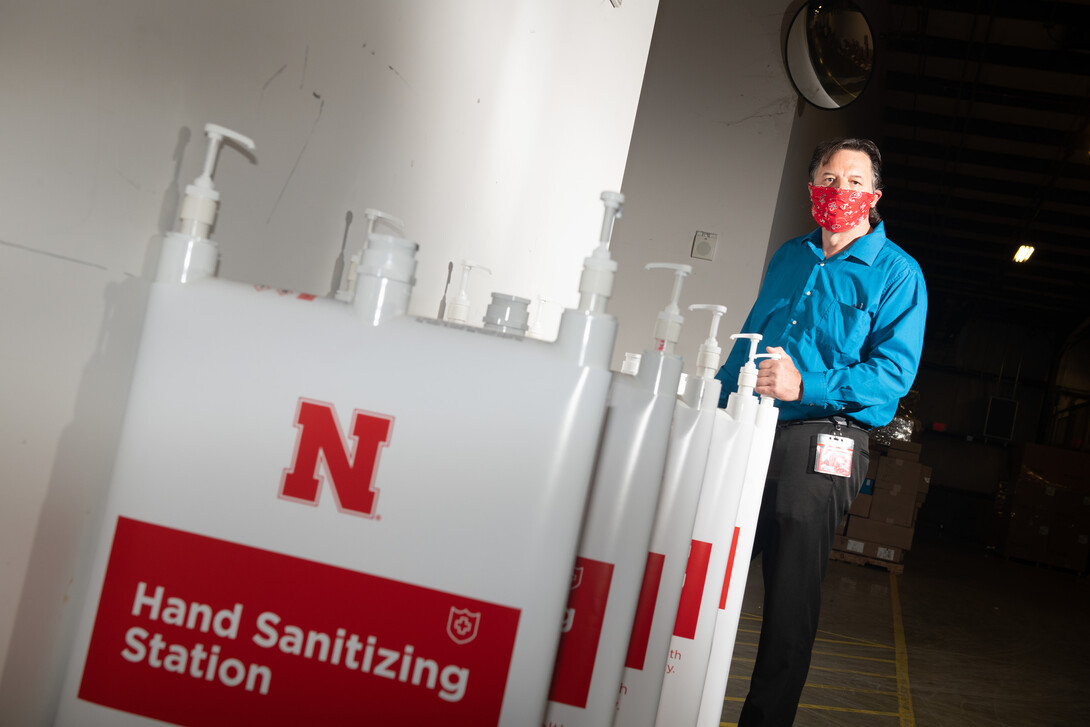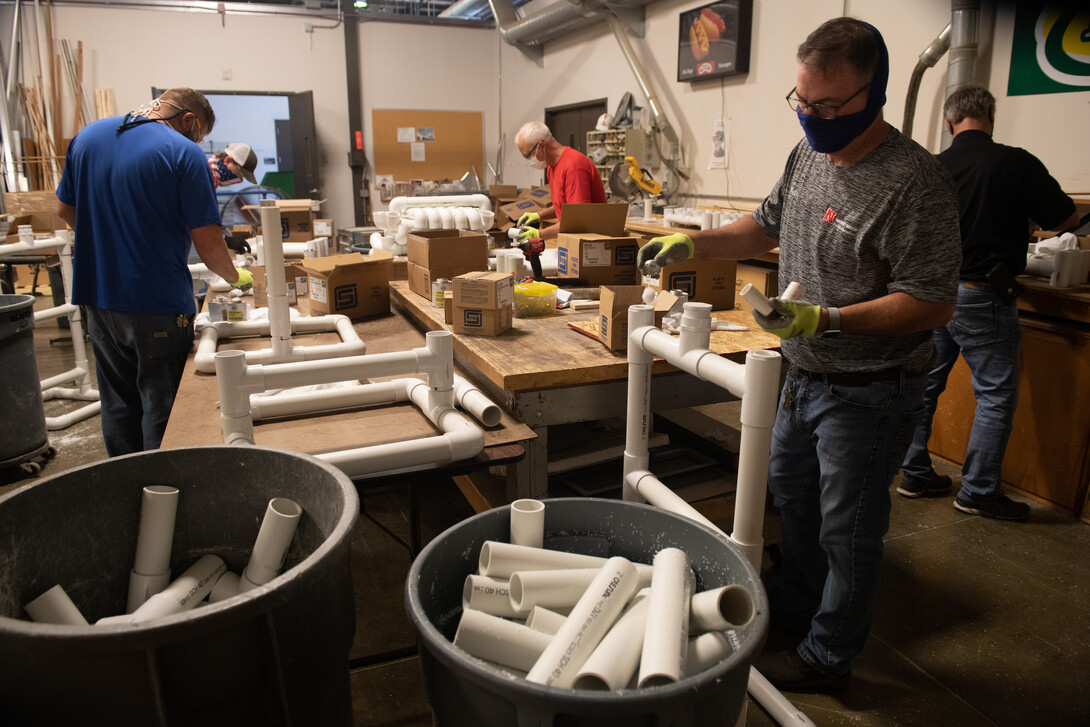
Necessity is the mother of invention, and Jim Jackson had a mother lode of necessity — the numbers he was looking at were staggering.
Forward to Fall committee members estimated that more than 100 gallons of hand sanitizer would be needed per day when the campus fully reopens for fall classes. Also, Jackson and his team, with support of the state fire marshal and code officials, identified more than 1,000 locations that would benefit from having a dispensing station, including several in student housing, Campus Recreation, Nebraska Unions, athletics, 83 Nebraska Extension offices and one wall dispenser in every elevator on campus.
One issue was already addressed as the university’s Food Processing Center was making 25,000 gallons of FDA-approved hand sanitizer for campus use, thanks to a donation of 21,000 gallons of ethanol from Green Plains.
But the question remained — how could it be effectively distributed?
Jackson and his team in University Operations, along with a team in University Housing innovated a solution: a free-standing large-capacity dispenser station that can be produced quickly by university staff.

“We wanted to put stations in high-traffic areas, and first we looked at the dispensers that attach to the walls, but most only hold about eight ounces, and they were nowhere to be found because demand was so high,” said Jackson, associate vice chancellor of university operations. “I also realized it would be a logistical nightmare to try to keep them full. We just don’t have enough staff, so we started looking for larger capacities, which don’t really exist.”
The apparatus designed by university staff is constructed of PVC pipe, stands about four feet tall, with cross sections of pipe throughout to maximize sanitizer volume all attached to a quarter-ounce dispenser nozzle, which prevents over-use. To connect the nozzles to the PVC pipe, Jackson asked Jerry Reif, studio manager of Nebraska Innovation Studio, to design and create the part — which couldn’t be commercially purchased — through plastic injection molding at NIS.
Each large dispenser holds a little more than three gallons of hand sanitizer. Jackson’s team also developed a way to fill the sanitizer stations using a cart with a 30-gallon transfer tank that can pump fresh sanitizer into the emptied dispensers.
After receiving a semi-load of PVC and the quarter-ounce nozzles, a team of University Operations and housing staff started production in late May, with a plan to make more than 1,500 of the dispensers. University Printing Services is printing the wrap signage for each dispenser that denotes the donations from Green Plains and others, including Cargill, that made the project possible.
The facilities team has already started placing the dispensers across the campuses, with more being added as they’re finished.
Jackson said he expects demand for the product to grow and has already received inquiries from the University of Nebraska at Omaha, Nebraska school districts and the Nebraska Forest Service. He is also sharing the design with Big Ten peer institutions.
Larry Morgan, executive director of facilities at the University of Nebraska at Omaha, ordered 200 of the fittings made by Nebraska Innovation Studio. His team is currently building dispensers in Omaha.

The university’s ongoing hand sanitizer project has benefitted communities across the state, as well as USDA offices throughout the United States. The University of Nebraska Foundation has set up a fund to support the project. To date, more than 110,000 gallons of hand sanitizer has been produced and distributed to health care facilities, day cares, educational service units, meat processing plants and more.
Hand sanitizer for schools, health care providers and essential businesses can be requested through the Hand Sanitizer website. University departments can request free hand sanitizer through a newly-established marketplace website. This site is limited to accept orders from UNL faculty and staff only.
The hand sanitizer stations are among key protective measures the university will have in place for its return to on-campus instruction for the fall 2020 semester. Other safety protocols will follow federal, state and local health recommendations and include observation of social distancing guidelines, wearing facial coverings and regular hand washing with soap and water. The university is also focusing cleaning in key areas, preparing flexible instruction plans and will continue to offer acute care (including access to COVID-19 testing) through the University Health Center.
Learn more about the university’s Forward to Fall plans and its ongoing response to COVID-19.







